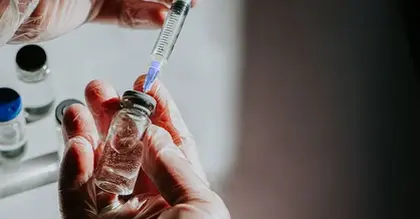Applies to ibalizumab: intravenous solution.
Serious side effects of Ibalizumab
Along with its needed effects, ibalizumab may cause some unwanted effects. Although not all of these side effects may occur, if they do occur they may need medical attention.
Check with your doctor or nurse immediately if any of the following side effects occur while taking ibalizumab:
Incidence not known
- Back pain
- blurred vision
- chest tightness
- chills
- confusion
- cough
- difficulty swallowing
- dizziness
- drowsiness
- fast heartbeat
- fever
- flushing
- headache
- hives, itching, skin rash
- nausea and vomiting
- puffiness or swelling of the eyelids or around the eyes, face, lips, or tongue
- seizures
- trouble breathing
- unusual tiredness or weakness
Other side effects of Ibalizumab
Some side effects of ibalizumab may occur that usually do not need medical attention. These side effects may go away during treatment as your body adjusts to the medicine. Also, your health care professional may be able to tell you about ways to prevent or reduce some of these side effects.
Check with your health care professional if any of the following side effects continue or are bothersome or if you have any questions about them:
More common
- Diarrhea
For Healthcare Professionals
Applies to ibalizumab: intravenous solution.
General
The primary safety assessment was based on 24 weeks of data from a trial which enrolled 40 heavily therapy-experienced patients with multidrug-resistant HIV-1 on a failing HIV treatment regimen. The most common side effects reported were diarrhea, dizziness, nausea, and rash. Most side effects were mild or moderate in severity.[Ref]
Renal
Very common (10% or more): Increased creatinine (10%)[Ref]
Increased creatinine (greater than 1.8 times the upper limit of normal [1.8 x ULN] or 1.5 times baseline) has been reported in 10% of patients.[Ref]
Gastrointestinal
Increased lipase (greater than 3 x ULN) has been reported in 5% of patients.[Ref]
Common (1% to 10%): Diarrhea, nausea, increased lipase[Ref]
Nervous system
Common (1% to 10%): Dizziness[Ref]
Dermatologic
Common (1% to 10%): Rash (included rash, erythematous rash, generalized rash, macular rash, maculopapular rash, papular rash)
Postmarketing reports: Pruritus[Ref]
Hematologic
Decreased leukocytes (less than 1.5 x 10[9] cells/L), neutrophils (less than 0.6 x 10[9] cells/L), hemoglobin (less than 8.5 g/dL), and platelets (less than 50,000/mm3) have been reported in 5%, 5%, 3%, and 3% of patients, respectively.[Ref]
Common (1% to 10%): Decreased leukocytes, decreased neutrophils, decreased hemoglobin, decreased platelets[Ref]
Hepatic
Common (1% to 10%): Increased bilirubin, increased direct bilirubin[Ref]
Increased bilirubin (at least 2.6 x ULN) and direct bilirubin (greater than ULN) have been reported in 5% and 3% of patients, respectively.[Ref]
Metabolic
Increased blood glucose (greater than 250 mg/dL) and uric acid (greater than 12 mg/dL) have each been reported in 3% of patients.[Ref]
Common (1% to 10%): Increased blood glucose, increased uric acid[Ref]
Hypersensitivity
Postmarketing reports: Hypersensitivity reactions (including infusion-related reactions, anaphylactic reactions)[Ref]
Immunologic
Frequency not reported: Immune reconstitution inflammatory syndrome (manifested as exacerbation of progressive multifocal leukoencephalopathy), positive test for anti-ibalizumab antibodies[Ref]
All patients enrolled in the clinical trials were tested for anti-ibalizumab antibodies during their participation; 1 sample tested positive with low titer anti-ibalizumab antibodies. No side effect or reduced efficacy was attributed to the positive sample reported in this patient.[Ref]




